Gaza Strip: Snapshot | October 2020
Monthly highlights
- No casualties recorded despite shooting incidents, rocket-firing and airstrikes.
- Increase in the exit of patients and their companions via the Israeli-controlled Erez Crossing, amid a continuous closure of the Rafah Crossing with Egypt.
- The unemployment rate in July-September reached nearly 49 per cent.
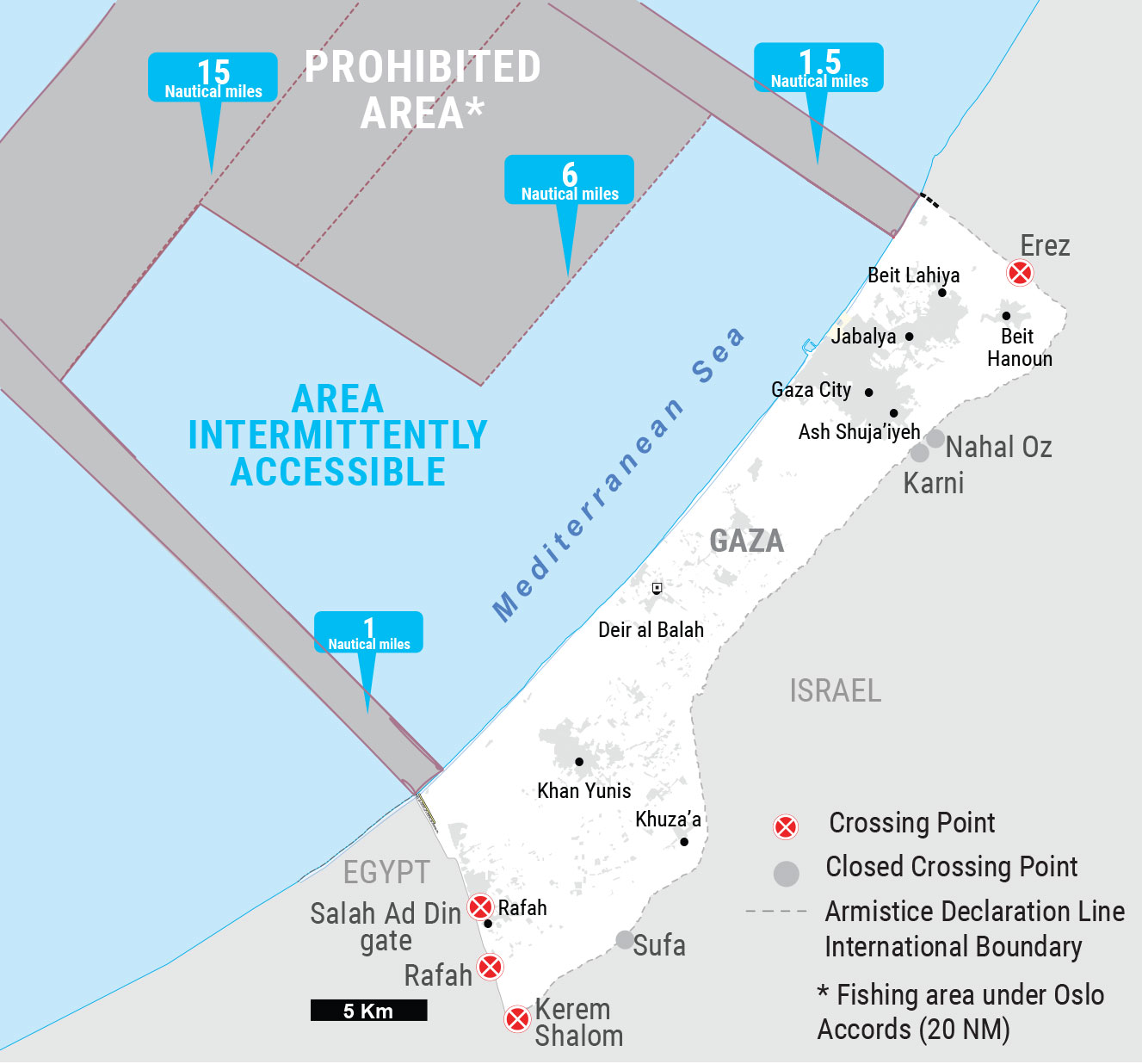
Protection of civilians and casualties
- On at least 58 occasions, Israeli forces opened warning fire towards Palestinians near the perimeter fence and off the Gaza coast, presumably to enforce access restriction. This represents an almost 28 per cent decline compared with the monthly average of such incidents since the beginning of the year (80).
- In one case, Israeli air jets sprayed crops near the perimeter fence with chemical substances, and in another, Israeli bulldozers entered Gaza, levelled farmland and damaged irrigation systems. Israeli sources linked the latter operation to the discovery and destruction of a tunnel dug by Palestinian armed groups.
- On at least three occasions, Palestinian armed groups fired projectiles towards Israel, which either fell in open areas or were intercepted in the air. Israeli forces subsequently struck armed group military bases and open areas. None of attacks resulted in casualties.
Comprehensive data on conflict-related casualties is available at OCHA’s interactive database.
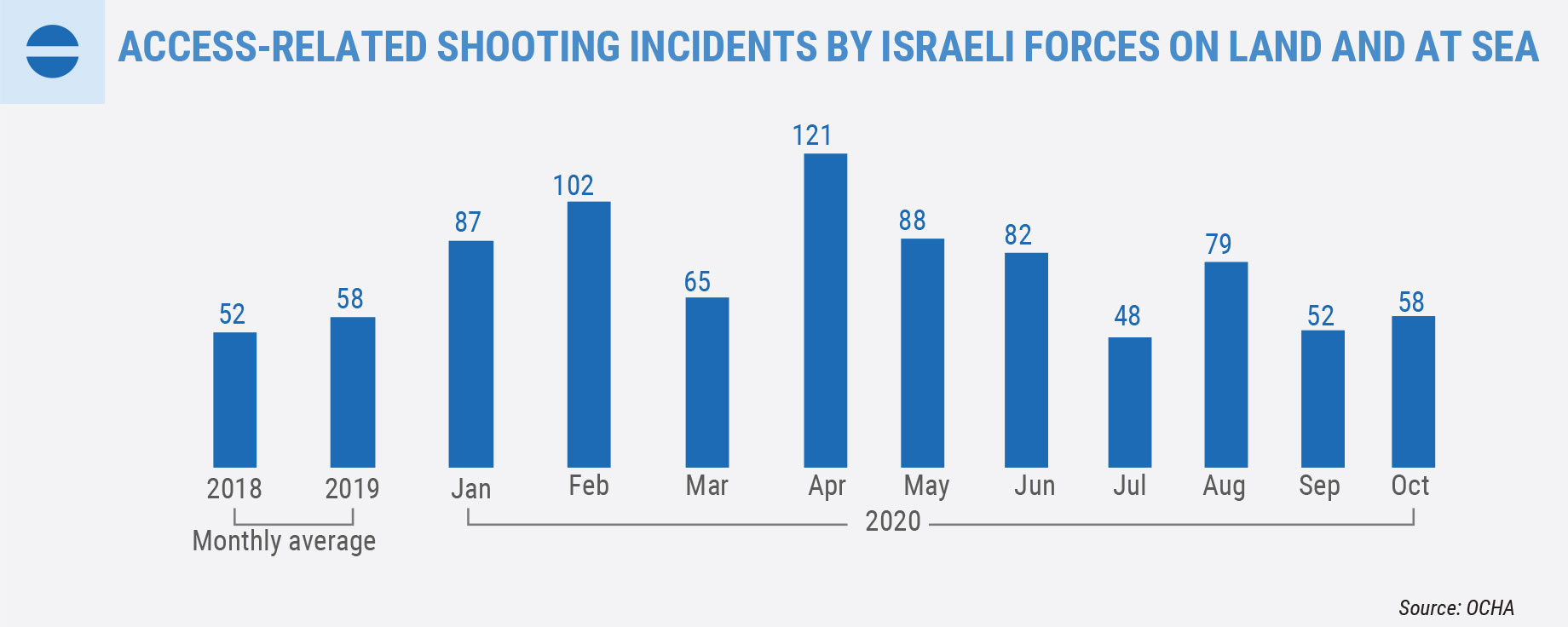
Access
- Nearly 1,300 crossings of people were recorded via the Israeli-controlled Erez Crossing in both directions (i.e from and to Gaza combined), more than double the monthly average since the outbreak of COVID-19 (April-September).
- The bulk of the crossings via Erez were by patients and their companions. The World Health Organization (WHO) continued operating a temporary mechanism to facilitate the processing of patients’ exit permit applications. In October, around 400 such applications were submitted to the Israeli authorities, of which 72 per cent were approved, while the remaining were either denied or received no answer by the time of the medical appointment.
- The Rafah passenger Crossing controlled by Egypt, which since the outbreak of the pandemic has been only operated on an exceptional basis, was kept closed throughout the month. However, over 800 truckloads of goods entered Gaza from Egypt through this crossing, almost the same as the monthly average since the start of 2020.
- The lockdown measures within Gaza in the context of COVID-19 were further relaxed during October, although a night curfew remains in place. Still the mandatory 14-day quarantine period for Palestinians returning from the outside applied during October, seven of which at a quarantine facility and seven at home.
- Over 9,600 truckloads of goods entered Gaza via the Israeli-controlled Kerem Shalom Crossing, an increase of 25 per cent compared with the monthly average since the beginning of the year. Additionally, 166 truckloads were allowed out of Gaza, including 89 to Israel and 77 to the West Bank, 10 per cent more than in October 2019.
Comprehensive data on Gaza crossings is available at OCHA’s interactive database.
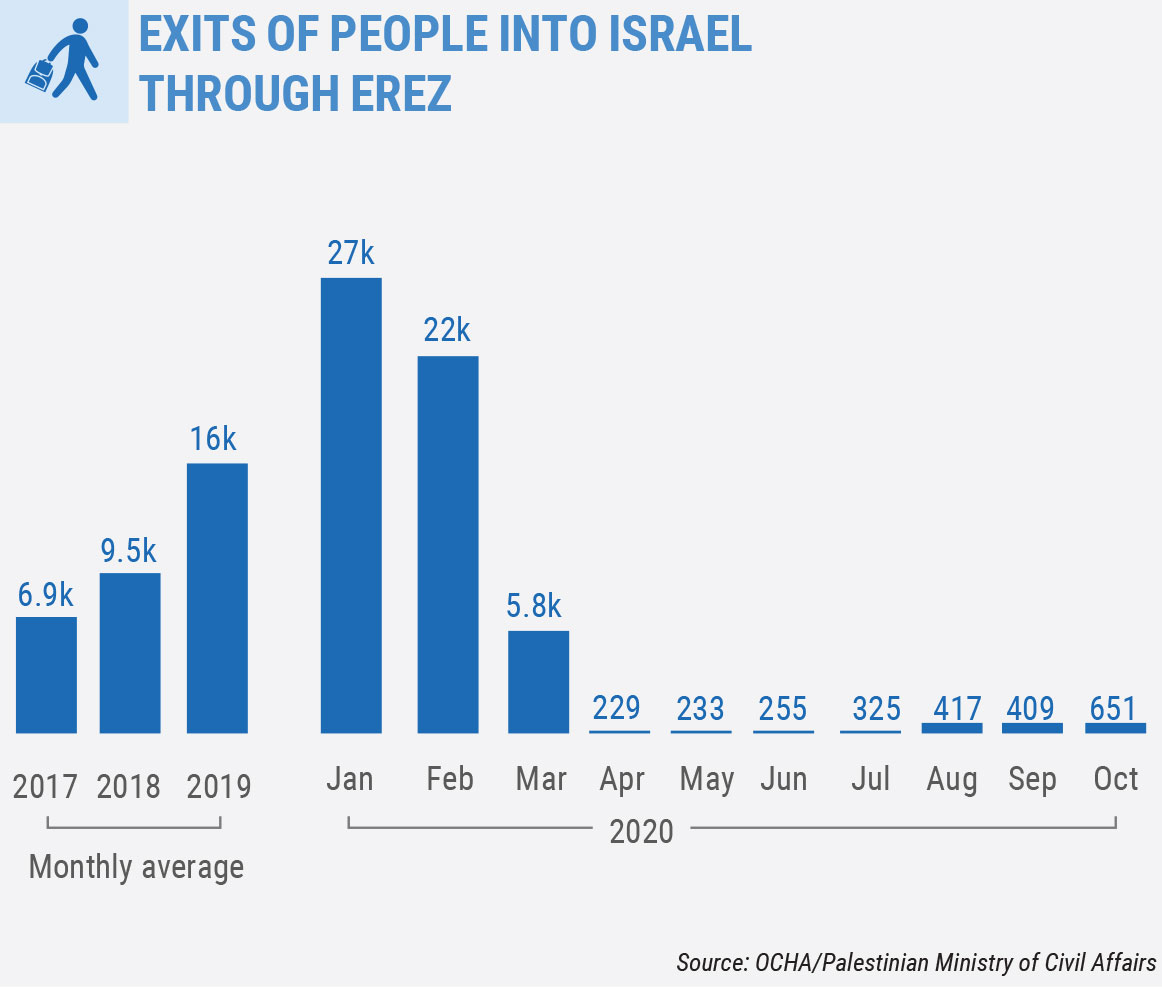
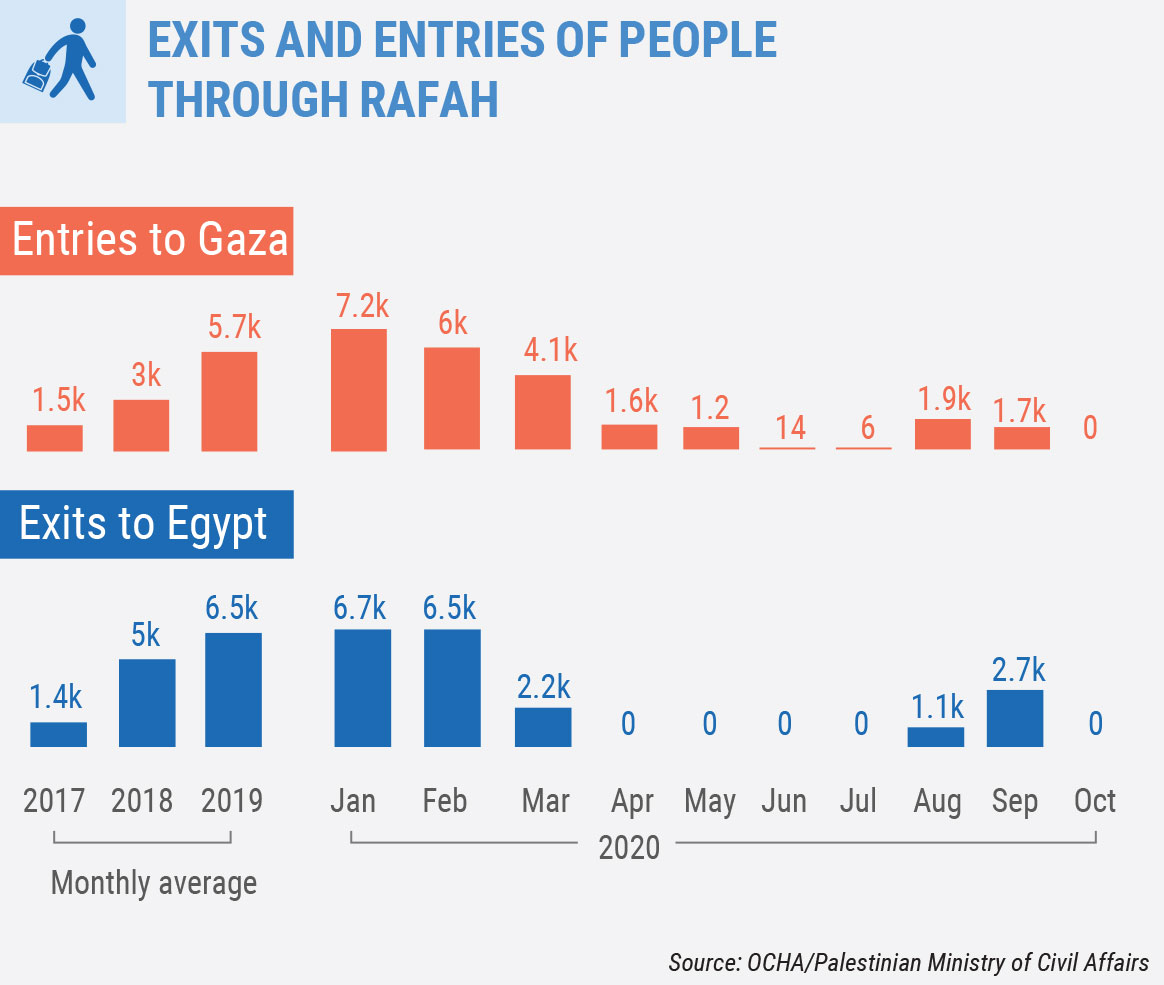
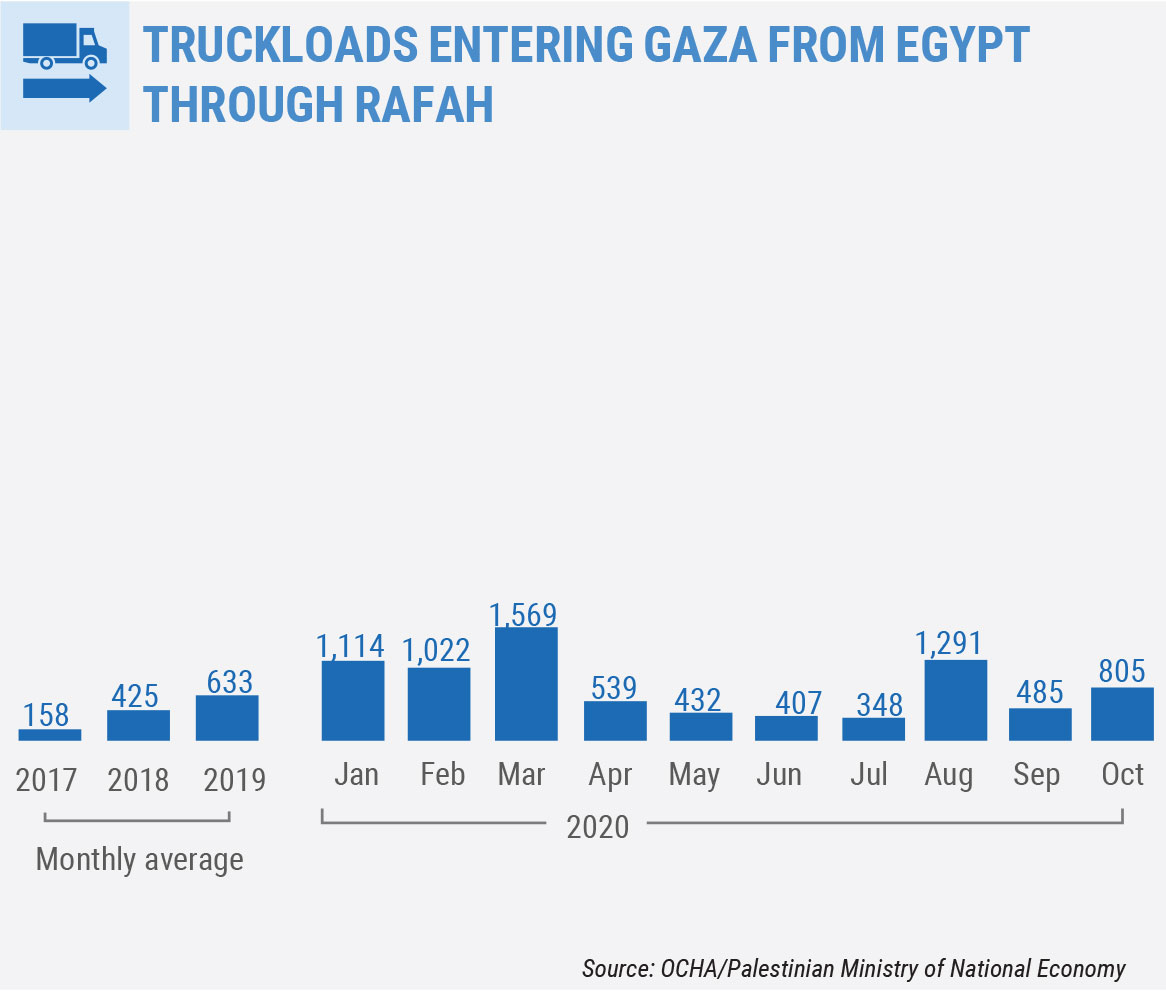
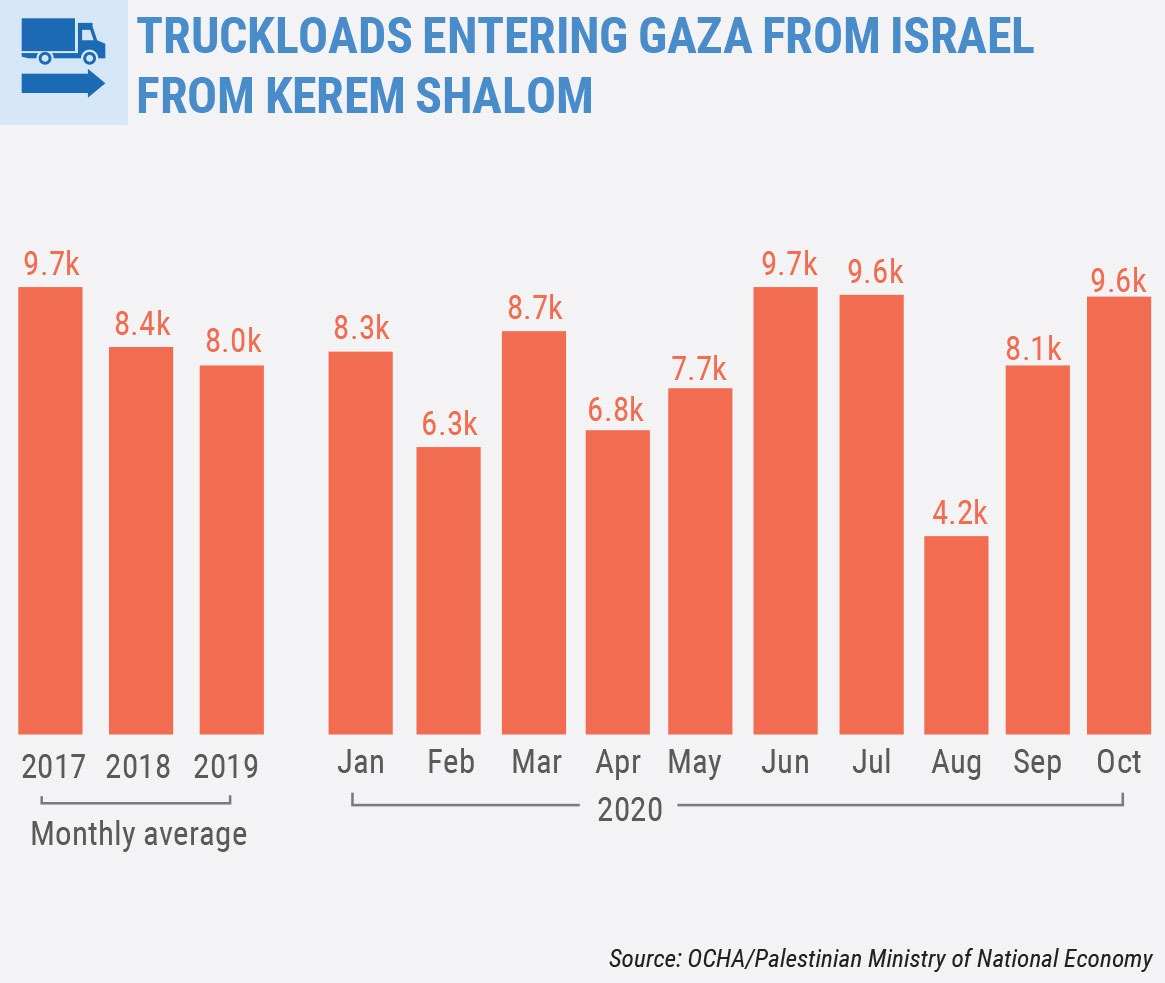
Services, Livelihoods and Shelter
- Daily electricity supply reached up to 13 hours throughout the month, up from 11 daily hours in September, due to a decline in demand on electricity.
- The volume of desalinated water produced in October slightly dropped compared with September but remains one of the highest recorded since the beginning of the year. The drop is attributed to shortages of needed chemicals at Gaza’s Desalination Plant.
- The pollution level of the wastewater discharged into the sea increased by 61 per cent in October compared with September. This is because the collection basins at Gaza city’s Wastewater Treatment Plant was put out of service for cleaning and rehabilitation works ahead of winter.
- The percentage of essential drugs at zero-stock level (supply for less than a month) at the Gaza’s health system slightly declined from 47 per cent in September to 45 per cent in October.
- In the third quarter of 2020, the unemployment rate in the Gaza Strip rose to 48.6 per cent, 3.5 percentage points more than in the same period in 2019, according to the Palestinian Central Bureau of Statistics. In absolute terms, this means that 207,700 people across Gaza were actively but unsuccessfully seeking a job during this period.
An interactive database on electricity supply in Gaza is available at OCHA’s website.











